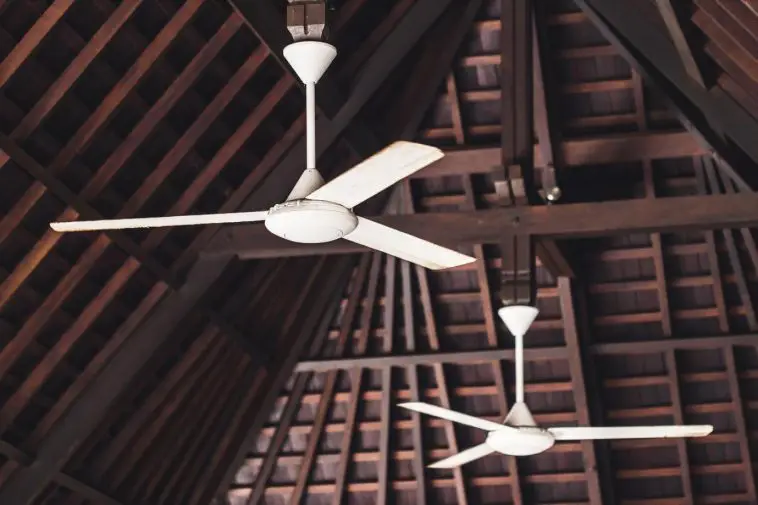Did you know that the average home uses 11,000 kilowatt-hours of electricity each year? If you want to cut back on your electricity use in the home, you’re probably investigating the amount of energy each appliance use.
We know that things like washers, dryers, and heaters are huge drains on electricity. But what about things like ceiling fans?
Do ceiling fans use a lot of electricity? If you want to learn the answer to this question, and more, you’re in the right place. In this article, we’ll teach you everything you need to know about ceiling fans and energy efficiency.
Do Ceiling Fans Use a Lot of Electricity?
The short answer to this question: no! You might think that it takes a lot of energy to rotate the blades on fans. But, the reality is that even an old model that isn’t a high-efficiency ceiling fan still uses a small amount of electricity.
And, new models have gotten even better at it. That being said, the specific amount of electricity your fan uses depends on factors.
These include things like how long you have it on, the model, and whether or not you’re using it with lights. Let’s take a closer look at how these factors affect the amount of energy used.
What Factors Affect Ceiling Fan Energy Efficiency?
The first factor is the number of watts that it takes your ceiling fan to run. This can vary depending on the make, model, and year. Typically, for most ceiling fans it can be anywhere between ten and one hundred twenty watts.
The next factor is whether or not the fan you’re using comes with Energy Star certification. This is a Federal designation that’s given to products that are better for the environment.
According to the EPA, an energy star fan is 40 percent more efficient than traditional ones. So, if you have one of these ceiling fans, you can save a lot of money.
The next factor is whether or not your fan is attached to a light fixture. We can all agree that most ceiling fan light fixtures look great. But, they also use a lot more energy than ceiling fans that don’t have them.
This is especially true for fixtures that don’t use energy-efficient LED lights. The final factor is the amount that you use the ceiling fan.
Ideally, you should only be using the ceiling fan when someone is in the room. Otherwise, there’s not much point to it being on.
But, a lot of people tend to forget that and leave their ceiling fans on all day. Just know that if you do this, your energy bill will be slightly higher.
How to Calculate Ceiling Fan Energy
To calculate how much energy your specific fan costs you will need to know its wattage. If it’s a new model, you can find this in the box. Otherwise, try consulting an online manual.
Once you find out the wattage of the fan, look into the rate your utility company charges you for electricity. For example, let’s say you have a thirty-watt fan and your utility company costs $0.16 per kWh.
First, you multiply these two numbers together. That would give you 4.8, but because we’re in kilowatts we need to change it to watts. To do this, you simply divide the figure by one thousand.
So, in this example, it would cost $0.0048 to run the ceiling fan for an hour. Talk about affordable! If you want to calculate how much this costs per day, you will need to factor in how often you use the fan.
If you use it all day, just multiply the figure by twelve or twenty-four. Otherwise, you will need to keep track of how often the fan is on and off during a certain day.
For example, if you keep it on for six hours every day, you would multiply your figure by that amount.
What’s Better for Cooling: Air Conditioning or Ceiling Fans?
Before we answer this question, it’s important to understand how these two separate things work. When fans are on they move the distribution of air in the room. This air then hits our skin (which is likely sweating) and cools it.
Air conditioners are completely different. They use chemicals to bring down the temperature of the room you’re in. So, if your goal is to cool down a room, yes air conditioners are more efficient.
But, remember how ceiling fans use up to one hundred twenty watts? Well, air conditioners use between seven hundred fifty watts and three thousand five hundred. So, if you’re going by cost, a ceiling fan is far less money.
Where to Find Good Ceiling Fans
As we mentioned in the factors section, it’s important to get a new ceiling fan if you’re serious about energy efficiency. There tend to be a lot of energy-efficient ceiling fans in the new models than in older fans.
But, where is the best place to go shopping for ceiling fans? We prefer online stores. For one thing, sites like Modern Fan Outlet come with a huge selection to choose from.
This helps you find the perfect fan for your specific room. What’s more, you can usually also save a lot of money when you shop online.
Just make sure you get a professional to install it if you don’t feel comfortable with the task. Otherwise, you could end up doing more harm than good.
Enjoy Learning About Ceiling Fans? Keep Reading
We hope this article helped you answer the question, Do ceiling fans use a lot of electricity? As you can see, ceiling fans use a small amount of electricity when compared to other appliances in our home.
This makes them a great way to stay cool in the summer without breaking the bank. We hope this article helped you. We regularly release content on the latest trends so keep reading to learn more.




